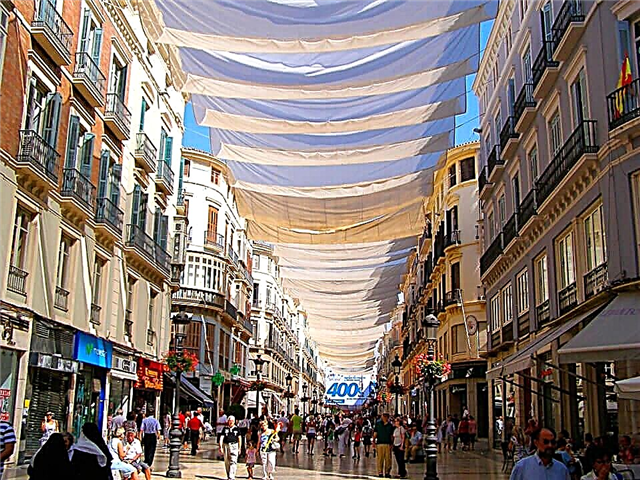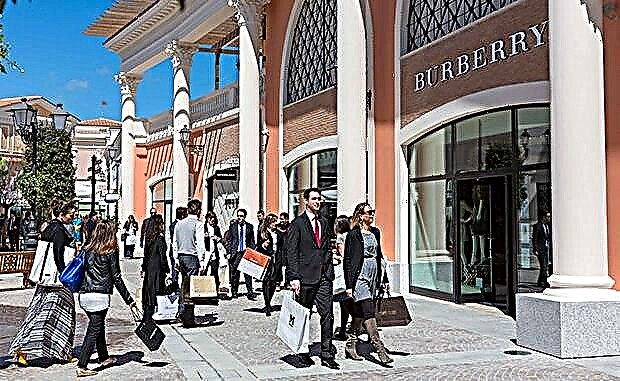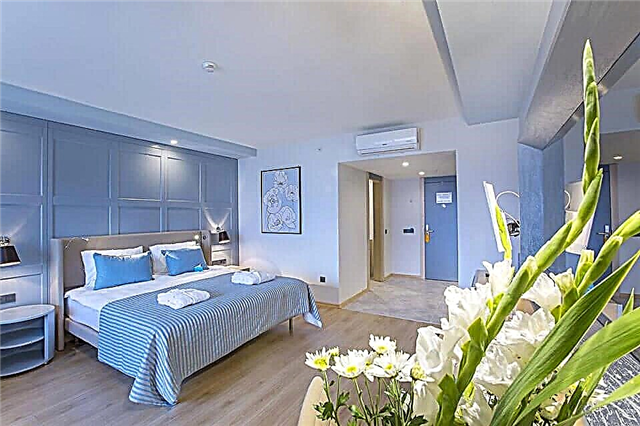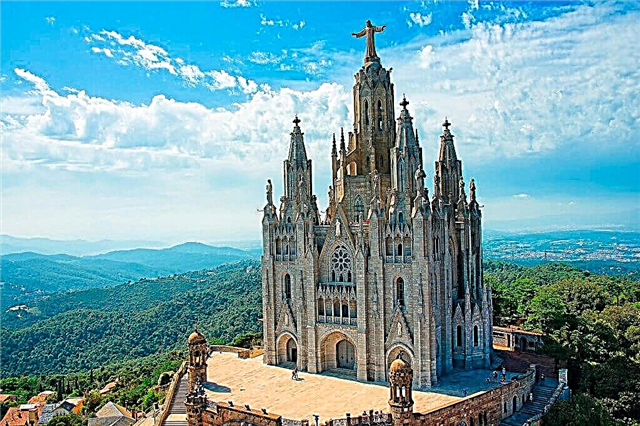Mount Tibidabo and the Temple del Sagrat Cor de Jesús in Barcelona, crowned with the figure of Christ, are one of the most visited attractions in the capital of Catalonia. The top of the mountain is the highest point in the city (512 m), from where a stunning panorama opens up. And although it is located away from tourist routes, the flow of tourists does not diminish at any time of the year.
Construction history

The place chosen for the construction is beautiful and symbolic. The very name "Tibidabo" contains the Gospel story about the temptation of the God-man by the devil, who put him on a certain high mountain and, showing the beauty lying below, offered to give up all the kingdoms of the world for worship (Matthew 4: 8). Literally in the Gospel there are words: "I will give to you", which in translation into Latin sounds like "tibi dabo".
It is possible that the splendor of the view from above prompted the Barcelona people to think about this episode and they decided to give the mountain such an unusual name. Therefore, it became quite natural to build a temple on its top, dedicated to Jesus Christ who had overcome temptation.

The cathedral's predecessor was a small chapel built in 1886 with money from a pious old woman: the widow Dorothea de Chopitea. After a while, the mountain was bought by the Council of Catholic Knights, consisting of 12 wealthy noble townspeople. They decided to build a magnificent temple on the highest point of the city. The project was commissioned by the talented architect Enrico Sagnier.
Construction began in 1902 and lasted 59 years. The architect did not manage to see his creation; after his death, the construction of the cathedral was completed by his son Josep-Maria Sagnier. In October 1961, the temple was consecrated, it was given the status of a minor basilica. And the small chapel, from which it began, has survived and still stands to the right of the entrance to the crypt.
Origin of name
The cult of veneration for the Heart of Christ began to spread in Catholicism in the 17th century. The reason was a vision of a French nun, Marguerite Alacock, in which Jesus appeared to her and wished that his heart be honored. At first, the official church reacted with suspicion to the nun's revelations, but in 1856 the Feast of the Sacred Heart of Jesus was nevertheless introduced into the liturgical calendar by Pope Pius IX and its celebration was scheduled for the 12th day after Trinity.
The heart of Christ is a symbol of his boundless love for people. Churches and celebrations dedicated to him signify the gratitude of believers for this love, help, protection. The Barcelona Temple is not the only structure dedicated to the Sacred Heart. They are spread all over the world, the most famous is the Sacre-Coeur Basilica in Paris. There are also two Catholic churches dedicated to this in Russia: in Samara and St. Petersburg.
Outdoor decoration

In addition to the main name, the cathedral has one more: "The Atonement Temple of the Heart of Christ." It was the idea of atonement for sins that formed the basis of the architectural solution.
The building consists of three parts:
- Lower part - crypt
- On it is the main temple
- The building is crowned with a statue of Jesus
All three parts are an indivisible whole and at the same time each of them has its own meaning and corresponding embodiment.
Crypt

The crypt is the ground part of the temple, representing the fall, made of dark brown stone. It was built in 1911 in the neo-Byzantine style with elements of Gothic, Classicism and Art Nouveau. It is a powerful squat structure with a horizontal arrangement and a flat roof.

Above the entrance is the figure of the Mother of God and Child, the patroness of Barcelona, sitting on a throne. On both sides of the entrance there are statues of two other patrons: Catalonia - Saint George, Spain - Saint Santiago (Jacob). The entrance arch is richly decorated with stucco, on top of which there is a semicircular fresco depicting the glorification of Jesus.
Main temple

On the roof of the crypt, the main temple of light stone rises, symbolizing the spiritual growth of a person: awareness of one's sins and repentance. Two wide circular staircases lead to it. It was built in the Gothic style between 1915 and 1952.
The symbols of the evangelists are depicted on the columns above the entrance: a calf, a lion, an eagle, an angel. The central tower, directed upward, is surrounded by four smaller ones. There are sculptures of 12 apostles installed on them. The Gothic elements add elegance and lightness to the building: pointed arches, spiers, stucco moldings, narrow stained-glass windows and rosettes.
Statue of jesus

On the central tower of the main temple is a seven-meter statue of Jesus Christ with outstretched arms, as if soaring under the clouds. By design, he personifies the all-encompassing love of God for people, with their vices, passions, giving forgiveness and blessing. He is the link between the earthly and the heavenly.
Interior decoration

The interior decoration is solemn and simple. The crypt consists of five naves, separated by powerful columns. Each nave has its own altar dedicated to different saints. The walls and vaults are decorated with alabaster bas-reliefs, painted with frescoes, and lined with colored mosaics with scenes on Christian and historical themes. Light breaks through the windows and stained-glass windows, filling the crypt with multi-colored glare.

The spacious and bright main church with a high vault is divided into three naves. The wide central nave has an altar with a wooden crucifix. The stained glass windows above the altar depict the Virgin Mary as represented by different peoples of the Catholic faith: Virgin of Guadalupe (Mexico), Virgin Anipolo (Philippines), Virgin Lujan (Argentina), etc. saints: John the Baptist, Anthony, Javier, Pope Leo XIII, Pius XI. There is a stained glass window with the words "I will give you."
Viewpoint

The panorama from Mount Tibidabo is one of the most picturesque in the Catalan capital. Observation decks are located at different levels of the Temple of the Sacred Heart. There are three of them. The lift lifts up to the lowest, widest platform. On it you can freely take pictures, move, looking at the city and its surroundings in all directions at 360º. Among the barely distinguishable quarters and streets, monumental buildings loom: the Sagrada Familia temple, the 144-meter Agbar skyscraper, the Fabra observatory, the 288-meter Torre de Collserola TV tower.

Higher, to the middle level, go up the stairs. This is a platform at an altitude of 539 m, where there are sculptures of 12 apostles. If the weather is clear, then from here the view extends to the surroundings up to 70 km. The highest platform - 568 m above sea level - is located at the feet of the statue of Christ. They climb there along a narrow steep staircase and admire the panorama in its entirety.
In addition to the view of the surroundings on the observation platforms, you can see many elements of the temple in great detail close up: bas-reliefs, statues, spiers, stucco moldings.
Amusement park

A visit to an amusement park is a touch of history. 116 years have passed since he started working. Its opening took place on October 29, 1901. Many attractions, despite being years old, have survived, work perfectly and are completely safe.
The park is located just below the cathedral, at an altitude of 500 m above sea level. Climbing to it on the funicular, it is interesting to observe the mountain slopes covered with greenery and panoramas opening from a height. In front of the entrance to the park there is a Ferris wheel and an iconic attraction - an attraction that has been operating since 1928: the red Tibidabo airplane.
At the entrance to the park, guests are greeted by cheerful, brightly dressed clowns who will not only entertain, but also help navigate the park. The entertainment offered is varied. The attraction "Lovely Lever", which has been operating since 1921, is popular. It is an impressive metal structure with two cabins that take turns ascending to a dizzying height of 50 meters.
An interesting museum of automata with a collection of the world's oldest mechanical dolls of the 19th century. Here you can see a clown playing the mandolin, an amazing orchestra, etc. Since 1905 a room of crooked mirrors has been opened, since 1915 - a children's railway.
Working hours
The cathedral is open daily from 7 am to 10 pm. The elevator to the observation deck operates from 11 am to 6 pm. Amusement park - from 12 to 21 hours.
Where is it located and how to get there
The temple is located on the top of Mount Tibidabo, 7 km from the center of Barcelona, away from the tourist routes. You can get to it yourself in several ways:
- From Plaza Catalunya to the temple every 20 minutes there is a special bus with the name "Tibibus" (the confluence of the words tibidabo and bus), travel time - 40 minutes. They only work on weekdays from April to December from 10:15 am to 9 pm. One way fare is € 2.95. This method is the easiest because no transplants are needed.
- By buses No. 15, 22, 58, 73, 75, 126, 131 or metro (L 6, L 7, L 8) get off at the Avinguda dei Tibidabo station. Near the metro station there is a blue retro tram stop ("Tramvia Blau"). This attractive form of transport was introduced in 1911 and its appearance has not changed since then. The fare is € 5.5. On it, go to the square. Dr. Andreu, where the funicular stops, then on the old funicular to the temple. Cost - € 7.7
- Take the S1, S2 train to the Peu del Funicular stop. From there take a new funicular to “Valvidrera Superior”, then # 111 to the temple.
We recommend the following hotels in Barcelona:











